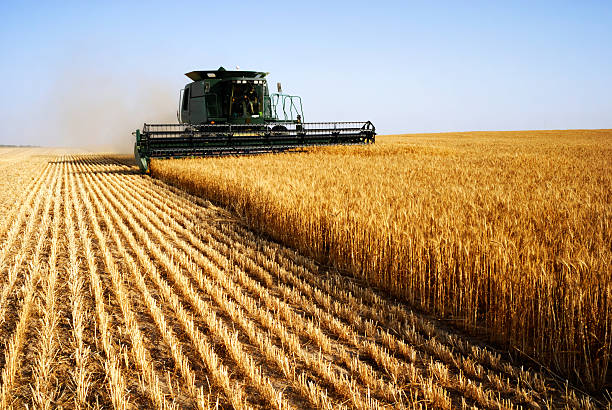Crop Cultivation & Harvesting

Crop Cultivation is the foundation of A.G. & D.M. GOULBOURNE LIMITED’s business. We specialize in the careful, efficient, and sustainable cultivation of cereals (except rice), leguminous crops, and oilseeds, each chosen for their importance in the food chain, animal feed, and industrial applications. Our cultivation practices prioritize crop health, quality, and high yield while ensuring the longevity and sustainability of our farming operations.
Cultivation Practices
Soil Preparation:
- We start the cultivation process with comprehensive soil analysis to assess the nutrient levels, pH, and organic content.
- Based on the results, we apply appropriate fertilizers, organic amendments, and lime to optimize soil health for crop growth.
- Our tilling and soil preparation methods ensure the right structure for planting and root development, promoting strong, healthy crops.
Seed Selection & Planting:
- We carefully select the best seeds for each crop, considering factors such as climate suitability, disease resistance, and high yield potential.
- Planting is done with precision using state-of-the-art machinery, ensuring that each seed is planted at the optimal depth and spacing for maximum growth.
- We adhere to the recommended planting timelines to ensure that crops grow in the most favorable conditions, enhancing productivity.
Irrigation & Water Management:
- Proper irrigation is critical to maintaining healthy crops, especially during dry spells. We use efficient irrigation systems, such as drip and sprinkler systems, to provide the necessary water while conserving resources.
- We monitor soil moisture levels regularly and adjust watering schedules to ensure crops receive adequate hydration without water waste.
Fertilization & Pest Management:
- Fertilization schedules are carefully planned to supply crops with essential nutrients, such as nitrogen, phosphorus, and potassium, at different stages of growth.
- Pest management is a priority to prevent crop loss. We use integrated pest management (IPM) strategies, combining biological, mechanical, and chemical methods to control pests in an eco-friendly manner.
- Our approach minimizes the use of harmful pesticides, prioritizing organic methods and biological controls whenever possible.
Crop Rotation & Soil Health:
- To maintain soil fertility and reduce the risk of pest buildup, we practice crop rotation. This involves alternating different types of crops in each season to replenish soil nutrients and break pest cycles.
- Leguminous crops, in particular, are part of our crop rotation system due to their ability to fix nitrogen in the soil, improving soil health for subsequent crops.
Growth Monitoring & Precision Agriculture:
- Throughout the growing season, we monitor crops for growth patterns, pest pressure, and nutrient needs using advanced tools like drones, sensors, and GPS technology.
- Precision farming techniques, such as soil sensors and satellite imaging, help us optimize resource use, monitor crop health in real-time, and make data-driven decisions for better yields.
Harvesting:
Timely Harvesting:
- Harvesting is scheduled based on the crop’s maturity, ensuring it is done at the optimal time to preserve quality, nutritional value, and market readiness.
- We use specialized machinery, such as combines and harvesters, designed for different types of crops, allowing for fast and efficient harvesting while minimizing crop damage.
Post-Harvest Handling:
- After crops are harvested, we immediately begin post-harvest processing, which includes drying, cleaning, sorting, and packaging to maintain freshness and quality.
- Our drying facilities ensure that cereals and legumes are properly dried to prevent mold growth, while oilseeds are processed carefully to retain high oil content and quality.
Storage & Preservation:
- Proper storage of harvested crops is essential to prevent spoilage and maintain market value. We have modern storage facilities that maintain the correct humidity and temperature levels to preserve grain quality.
- Oilseeds are stored in airtight containers to prevent oxidation, ensuring high-quality oil extraction when processed later.
